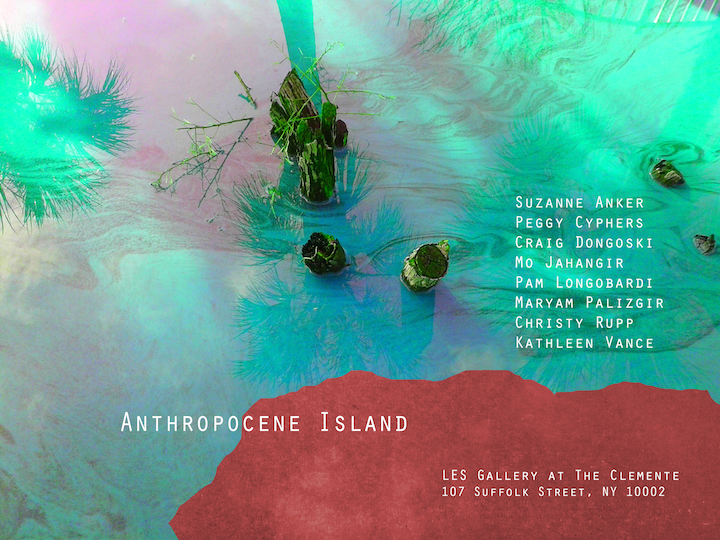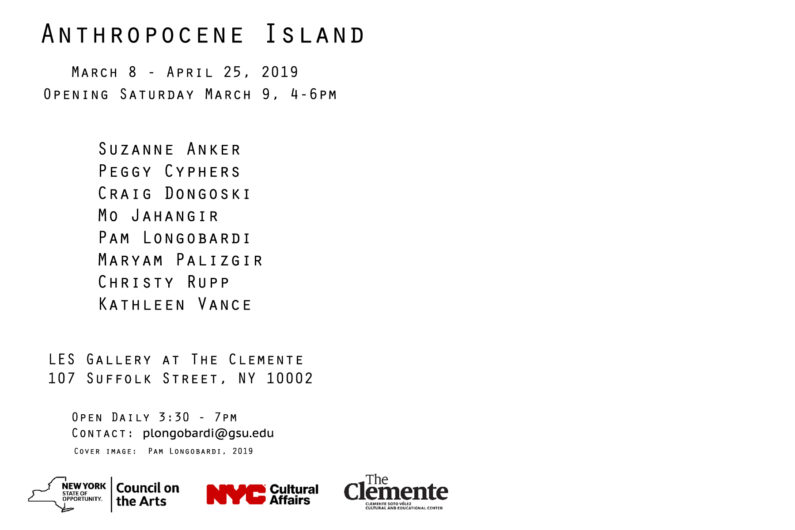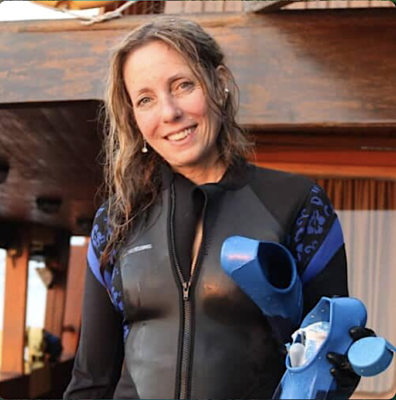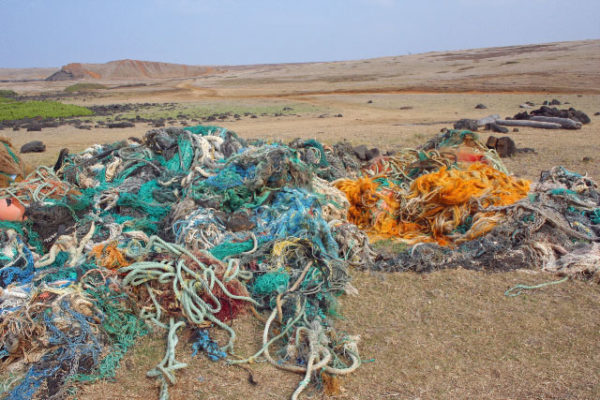Update:
After The Clemente premier, Anthropocene Island travelled to Pratt Institute’s Dekalb Gallery in September 2019.
Here is an except from a review of the show in Art511 by Terra Keck:
“I carried that dread to the work of Pam Longobardi, who I felt held it with me. If Rupps work shoves viewers off the cliff of existential dread, Longobardi is the net that catches them. “Night Flag of Lesvos” is a patchwork abstract tapestry made of recovered life vests from migrants and refugees on the coast of Lesvos, Greece. Working through her platform Drifters Project, she works with refugees on site to create works of art to help generate income for the social and economic well-being of the islands inhabitants. In addition to donating her profits, Longobardi has disrupted the ever increasing flow of plastic into the ocean by collecting these life vests to create these works. This plastic carried children to safety and held families together afloat the Aegean sea, and now it continues to reinforce the meaning of a community’s power over adversity. In contrast, the geometric edges of sewn plastic allude to a harsh rigidity in form. Layered patches of grey and orange read as digital errors in computer coding. It’s as if the experiences of the human bodies they carried aren’t suited to fit into these mass produced rectangles of plastic. Longobardi asks viewers to hold all at once the cold reality of escaping violence, the human need for community, and the truth of what this migration means for our planet.”
Read full review here: http://art511mag.com/2019/10/08/harbingers-and-oracles/
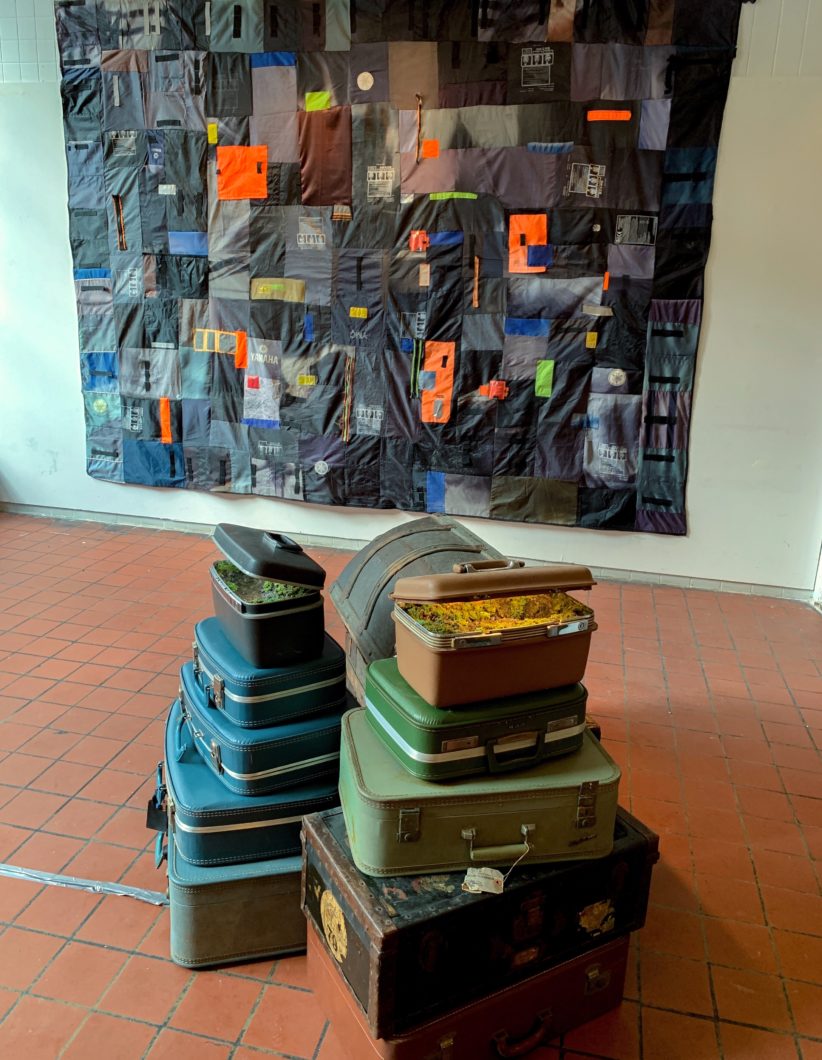
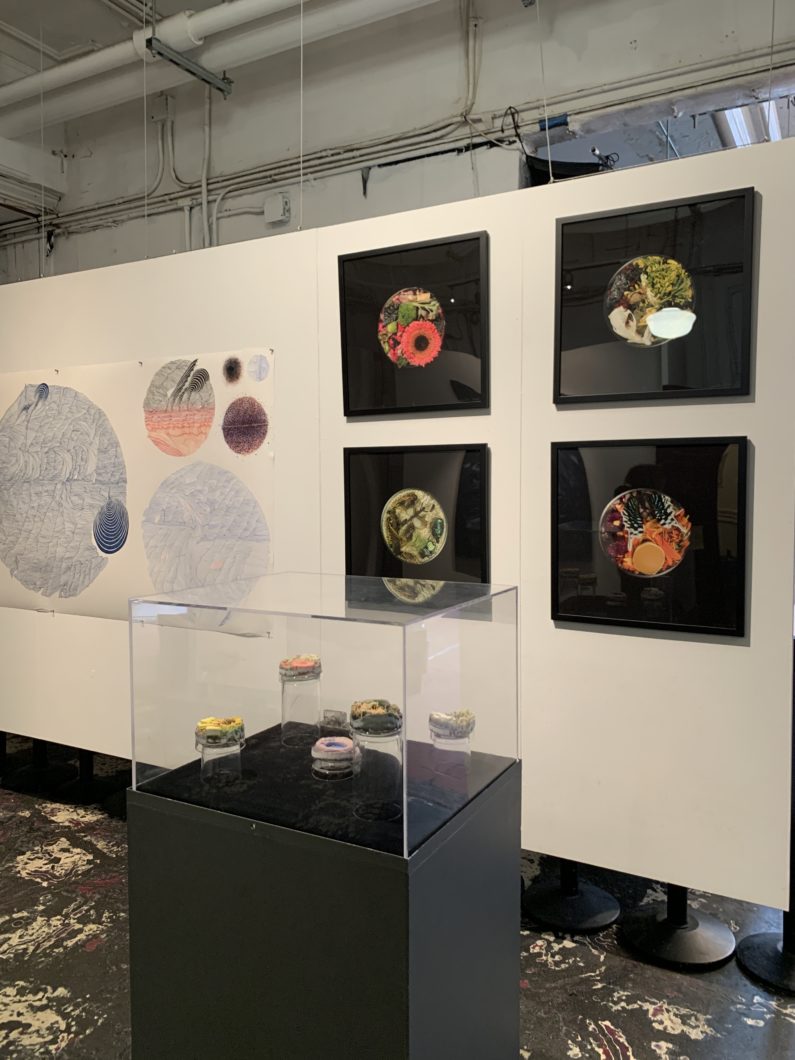
 Announcing group show in NY ~!!
Announcing group show in NY ~!!
PRESS RELEASE:
Anthropocene Island
Artists: Anker, Cyphers, Dongoski, Longobardi, Jahangir, Palizigir, Rupp, Vance
Curated by Pam Longobardi
LES Gallery at the Clemente
107 Suffolk Street, ground floor
NY, NY 10012
March 9 – April 25, 2019
Opening Reception: Friday March 9, 4:00-6:00pm
Anthropocene Island addresses the vast environmental and geopolitical forces re-ordering the world as we have known it. Through the traceable singularity that is plastic (the geologic place-marker of the Anthropocene) to native and ‘invasive’ species, the re-worlding of migratory species, including humans, are examined. As a universal material of contemporary global culture, plastic endures in the environment such that all plastic ever created still exists. The petrochemical industry that fuels the relentless production of plastics is the same modus operandi that is also causing desperate attempts to extract the last drops of oil from the planet, which in turn is cooking up the enormous climatic changes we experience across the globe. Climate change is pushing all creatures – human, plant, animal and mineral – into new geolocations.
The artists of Anthropocene Island examine these interconnected linkages through sculpture, drawing, photography, video and installation.
Suzanne Anker, (NY) creates miniature worlds within Petri dishes that pile natural and humanmade materials into plush ‘landscapes’ photographed aerially and further translated via machine technology into 3d modeled artificial terrains, capturing and reinterpreting the color density of the photograph into stratigraphic reliefs of tiny proportions. Anker is a pioneer in Bio Art, currently researching the way that nature is being altered in the 21st century through her practice and collaborative facility, the SVA Bio Art Laboratory.
Peggy Cyphers (NY) relocates and reorders her painting material to picture the oceanic labyrinth of human mind and ego. Vast and continuously evolving, the non-static paintings are her primary studio practice: Cyphers makes a parallel action in paint to the evolving physical world and the changes wrought on the creatures of the planet.
Craig Dongoski (GA) captures radio frequencies from rocks and the ionosphere, pounding stones into first human sculptures (cupules), and creating large intricate wave tracery drawings. Dongoski interprets the primate need to express and trace paths of existence through drawing and sound.
Pam Longobardi (GA), through her collaborative platform Drifters Project and an evolving team, travels the world ocean, creating actions on site with local citizens to generate sculptures, photographs and installations of displacement. By disrupting the plastic flow, Drifters examines new realities as aquatic invasive marine species, and now human migrants, relocate on all manner of floating plastic. Recent collaborations include citizens and refugees of Lesvos through flag-like portable monuments that travel and generate income flow for social enterprises on-island.
Maryam Palizgir + Mo Jahangir (IRAN + GA) Iranian immigrants on temporary visas in the US hang between two worlds and create immersive, phenomenological installations and objects that combine technology and fabric while awaiting their future residence. Utilizing digital imagery, photography and light, and often collaborating on installations, Maryam mourns and memorializes the vanishing Lake Urmia of Iran that is turning into a vast salt desert, while Mo re-photographs revolutionary crowds of human protest in Iran.
Christy Rupp (NY) builds skeletal creatures from the backbone plastic of the consumer age, credit cards. A long-time activist and artist recording the demise of habitat, Rupp draws the full circle around human extraction and consumption.
Kathleen Vance (NY) packs miniature, fabricated landscapes complete with running rivers into vintage valises and steamer trunks. These traveling fragments that reference the bucolic landscapes of Romanticism are constructed with the artificial materials of industrial manufacturing creating a self-contained universe ‘to go.’ As environmental art, Vance’s works frame current complexities surrounding the containment of natural water flows, water rights and future water wars in a seemingly benign and magical artifice.
Open Daily 3:30 – 7:00pm. For further information, contact Pam Longobardi at plongobardi@gsu.edu

